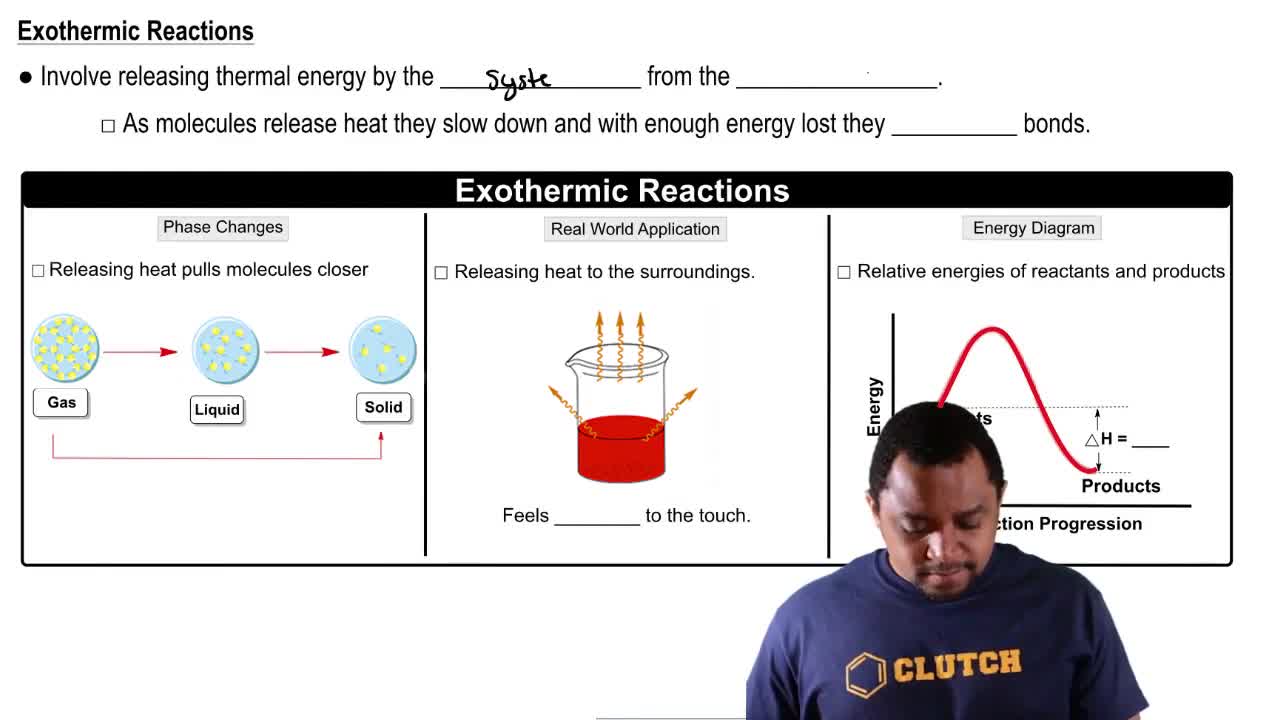Here are the essential concepts you must grasp in order to answer the question correctly.
Photosynthesis
Photosynthesis is the biochemical process by which green plants, algae, and some bacteria convert light energy into chemical energy. During this process, they use sunlight to transform carbon dioxide and water into glucose and oxygen. The overall reaction is crucial for understanding how energy flows through ecosystems and the role of plants in carbon fixation.
Endothermic and Exothermic Reactions
Endothermic reactions absorb energy from their surroundings, resulting in a decrease in temperature, while exothermic reactions release energy, often in the form of heat. In the context of photosynthesis, the process is endothermic because it requires energy input from sunlight to drive the conversion of carbon dioxide and water into glucose.
Recommended video:
Endothermic & Exothermic Reactions
Energy Transfer in Chemical Reactions
Energy transfer in chemical reactions refers to the changes in energy that occur during the breaking and forming of chemical bonds. In photosynthesis, the energy from sunlight is captured and stored in the chemical bonds of glucose, highlighting the importance of energy dynamics in biological processes and the conversion of solar energy into a usable form.
Recommended video:
Chemical Reaction: Chemical Change Concept 1
 Verified Solution
Verified Solution


 2:30m
2:30m
